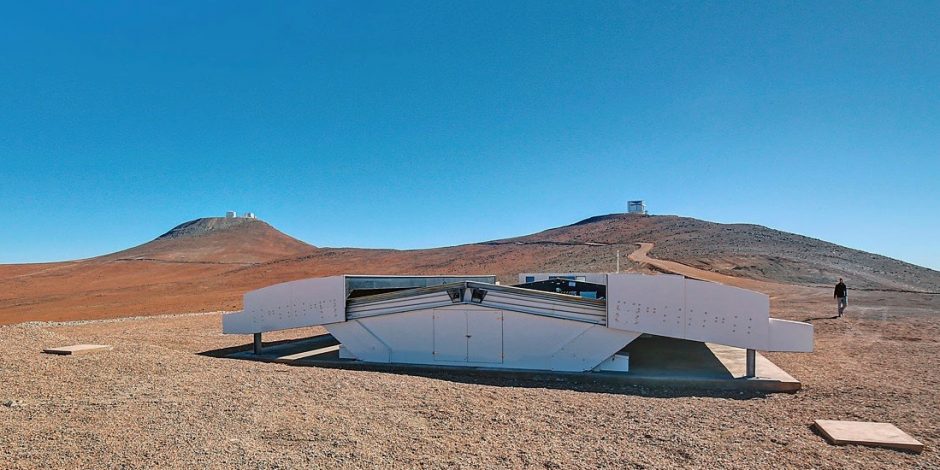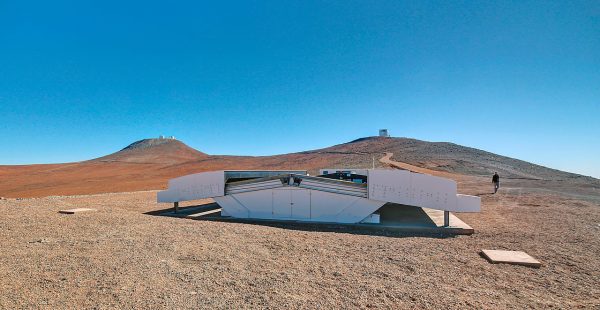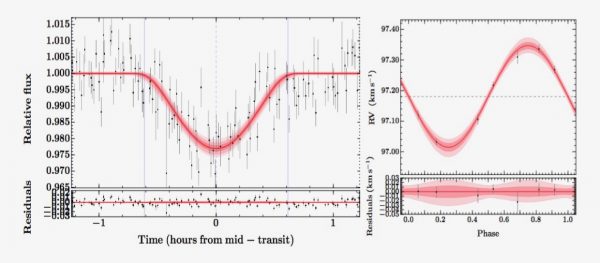NGTS eyes start finding new planets

The Next-Generation Transit Survey (NGTS) project is dedicated to finding Neptune sized transiting exoplanets around bright southern hemisphere host stars. It builds on over a decade of experience from the WASP project – the most successful ground based survey for transiting planets. NGTS is the most precise ground-based transit survey currently operating; capable of monitoring 96deg2 of sky at a time using twelve independently mounted 20-cm telescopes at Paranal Observatory – one of the best photometric sites in the world. Due to the high quality imaging cameras (2k×2k back-illuminated E2V deep- depleted CCDs) and exquisite tracking capability (one-tenth of a pixel precision guiding over a full night), NGTS is able to achieve millimag photometry on 10 minutes time-scales – allowing to detect transiting planets with radii as small as Neptune orbiting K- and M-dwarfs.

The Next-Generation Transit Survey (NGTS) is located at ESO’s Paranal Observatory in northern Chile. (Image: ESO)
The NGTS project began regular science operations in September 2015. To date the project has completed over 30 fields, each comprising of 96deg2 of sky. The longest duration field has been monitored for more than 5 months, with over 80% of usable nights, thanks to the excellent conditions at Paranal observatory and robust and efficient operations of the building and telescopes. The NGTS team is putting considerable efforts into ensuring that all transiting planet candidates are carefully vetted before moving to precise radial velocity monitoring.
All candidate lightcurves are carefully screened for characteristic signatures of eclipsing binaries or blended eclipsing binaries (secondary eclipses, ellipsoidal variations, centroid shifts). All candidates are spectroscopically screened using first CORALIE spectrograph at La Silla Observatory. This ensures that we eliminate any host stars that are too hot or too rapidly rotating for high precision radial velocity. It also allows us to rule out any giant stars, spectroscopic binaries, blended systems with asymmetric line profiles, and eclipsing binaries or hot Jupiters with large amplitude radial velocity variations (> 30m.s−1). We also screen for high stellar activity hosts, both in terms of checking the photometric activity from the NGTS light curves and checking the spectroscopic activity indicators from the CORALIE spectra. These steps greatly reduce our false positive rates.
HARPS is then used to measure the mass of surviving candidates as Neptune masse typically induces radial velocity variations with a semi-amplitude of just 3-10 m.s−1. HARPS was successfully used in Period 98 (6 allocated nights) for the follow-up of NGTS candidates. Among our candidates, we discovered, and will soon announce, the third gas giant and the most massive planet (0.8 Mjup) ever discovered transiting an M dwarf (0.5 M⊙). Four promising candidates are still requiring additional measurements in beginning of P99.

Global modeling of the first transiting exoplanet NGTS-1b. (Left) NGTS light-curve phase-folded to the 2.65-days orbital period revealing a 1.0 Rjup companion. (Right) Phase-folded HARPS radial velocities revealing a 0.8 Mjup companion. Although optically faint (V=15.5), the uncertainties obtained with HARPS using the EGGS mode on this M0.5 dwarf are close to merely 10 m/s in 1-h exposures. Shades of red/pink are 1 and 2 sigma confidence levels.
Categories: Internal Newsletter, News

